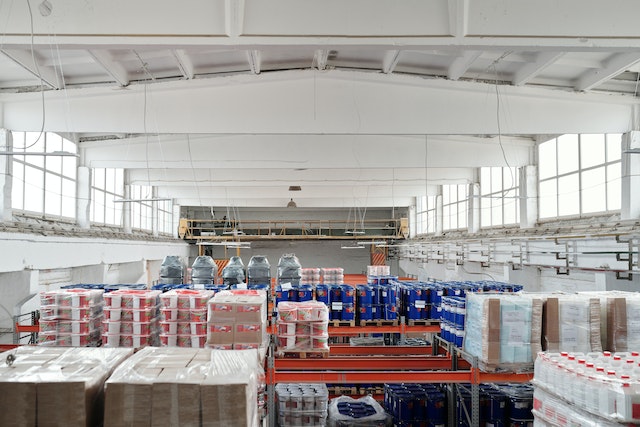Warehouses are an important part of many businesses, but can also be very complex and difficult to manage. There are many things to consider when organizing and storing inventory in a warehouse. If it needs to be done correctly, it can lead to severe problems for the company. To help you optimize your warehouse storage process, here are some tips that will make the process smoother and less complicated.
1. Assign Space Requirements
To assign space requirements, you need to understand the volume of your products. You must also consider the height and width of each product and how much space is required between products. You’ll also need to know the weight of each product and how much weight your shelving can hold. Finally, you’ll need to factor in aisle widths and other necessary clearance areas.
Once you have all this information, you can begin calculating the total cubic feet required for storage. This will give you a good starting point for determining the size of your warehouse. You can decide on using a pallet rack storage system to help maximize storage space in your warehouse. Remember that you’ll always need additional storage and handling space, so it’s vital to overestimate slightly to stay in the room.
2. Evaluate Your Inventory Needs
When it comes to inventory, one of the most important things to keep in mind is evaluating your needs. This means looking at what you’re selling, how much stock you have on hand, and how quickly that stock sells. It also means looking at your long-term goals and planning accordingly.
There are a few different factors to consider when evaluating your inventory needs:
- The type of products you sell: Some are seasonal and will only sell during certain times of the year, while others may be more popular in some areas. You need to take all this into account when planning your stock.
- How much stock you have: if you have too much inventory, it can tie up valuable capital that could be used elsewhere. On the other hand, if you need more stock, you may miss out on potential sales opportunities.
- How quickly your inventory sells: this varies depending on the type of product you sell. Some items may move quickly, while others may sit on the shelves long before being sold. It’s essential to plan accordingly so that you don’t end up with too much or too little inventory at any given time.
3. Consider the Dimensions of Your Warehouse
When it comes to the dimensions of your warehouse, there are a few things you need to take into account. When it comes to the dimensions of your rent out commercial warehouse space Fort Wayne, IN, there are a few things you need to take into account. The most important thing is ensuring the warehouse is big enough to accommodate all your inventory. You also need to consider the height of your warehouse and its width and length.
The height of your warehouse is essential because you need to ensure enough room for employees to move around and for forklifts or other machinery to pass through. The width and length are crucial because you need to provide enough space for trucks to park and unload cargo. You also need plenty of space for employees to move around in the warehouse.
4. Organize Product Storage
Once you have determined the space requirements for your warehouse, it is time to start organizing your inventory. The most important thing to do here is to group similar products and assign them a storage location based on their dimensions. For example, you could separate products by size or weight. You should also consider how often the products are used and how easily they can be accessed.
Some other tips for organizing product storage include labeling each location clearly, using color coding to indicate different categories of inventory, and keeping your warehouse clean and organized at all times. This will help ensure that everything is easy to find, making pulling orders smoother and more efficient. And by optimizing your warehouse storage, you will be better able to meet your customer’s needs and increase sales.
5. Consider Automating Your Warehouse
If you want to take your warehouse management to the next level, consider automating some of the processes. For example, you can increase efficiency and improve productivity by using a warehouse management system (WMS). This can help reduce labor costs while also improving order fulfillment times.
There are many different types of automation that you can consider for your warehouses, such as automated storage and retrieval systems (ASRS), conveyors and sorting systems, pick-to-light technology, or pallet handling equipment. When deciding which type of automation to implement, it is vital to consider your warehouse’s size and layout, along with your business’s specific needs.
6. Focus on Safety
Regarding warehouse storage, your top priority should always be safety. This means that you need to consider several factors, such as aisle widths, lighting levels, traffic patterns, and the positioning of heavy equipment.
You should also ensure that all employees are appropriately trained in properly using the equipment and always following established safety procedures. This will help minimize the risk of accidents in your warehouse, which can be costly and result in injuries to employees.
7. Test and Evaluate
Testing and evaluating are two critical steps in the product development process. The testing process should be designed to cover all aspects of a product’s design. This includes both the physical and functional aspects of the product. To ensure that all safety and quality standards are met, testers should be qualified individuals familiar with the product and the testing process.
The evaluation process involves determining whether a product is viable for release to the market. This includes assessing price points, competition, manufacturing costs, and customer demand. It is also essential to consider how well a product will align with your company’s current product portfolio and whether there will be adequate customer demand.
The warehouse storage process is an integral part of any business. By implementing the strategies discussed here, you can optimize your warehouse and improve order fulfillment times while ensuring that all safety standards are met. With careful planning and attention to detail, you can create a well-organized and efficient warehouse, helping to meet your customers’ needs and increase sales.










